Beyond the Valley of the Dolls (1970)
Directed by: Russ Meyer
Written by: Roger Ebert
Starring: Cynthia Myers, Dolly Read, John Lazar, Marcia McBroom
USA
ON BLU-RAY: NOW, from ARROW VIDEO
RUNNING TIME: 109 min
REVIEWED BY: Dr Lenera, Official HCF Critic
Kelly MacNamara, Casey Anderson and Petronella “Pet” Danforth perform in a rock band, The Kelly Affair, managed by Harris Allsworth, Kelly’s boyfriend. Travelling to Los Angeles to find Kelly’s estranged aunt Susan Lake, heiress to a family fortune, they are welcomed, and Susan even promises a third of her inheritance to her niece, but her sleazy financial advisor Porter Hall discredits them as “hippies” in an attempt to embezzle her fortune himself. Undeterred, Susan introduces The Kelly Affair to well-connected rock producer, Ronnie “Z-Man” Barzell, who coaxes them into an impromptu performance at one of his parties. The band is well-received and Z-Man becomes their Svengali-style manager, changing their name to The Carrie Nations and starting a long-simmering feud with Harris, while the girls begin to sink into a world of decadence….
When Arrow’s Blu-ray of Beyond The Valley Of The Dolls was popped through my letterbox, I realised that, despite writing constantly watching a ridiculous number of films and writing for a website with the word “cult” in the title, I’d never seen a film by that smut purveying, boob-loving auteur Russ Meyer, unless you count a viewing of a few minutes of one film [it may have been Up] a couple of decades ago when I was channel flicking during the adverts in between something else I was watching. I guess they never really appealed very much. Going into Beyond The Valley Of The Dolls as pretty much a Meyer virgin, I didn’t know entirely what to expect, and now I’ve seen the film, I’m still having trouble entirely processing what I saw last night. Generally considered as either a “classic” bad movie or a more sophisticated film that subverts Hollywood cliches, expectations and takes a wry look at the 1960’s, I guess that the truth is somewhere in between. The often bizarre dialogue, delivered by its cast straight faced, means that it’s a little hard to get into, while some of the scenes seem to have been plonked into the film randomly [which actually some of them basically were], but once you get onto its crazy wavelength there’s a great deal of fun to be had and just a bit of food for thought to chew on, while its look at celebrity culture still seems spot on. I wouldn’t say that Beyond The Valley Of The Dolls has instantly made me a Meyer fan, but I’m certainly intrigued to see more.
It was originally intended as a sequel to the film of Jacqueline Susann’s novel Valley Of The Dolls [dolls” being a slang term for anti-depressant pills or “downers”], and even included two of its characters and stars in its original draft script, but was instead revised as a partial parody of the commercially successful but critically reviled original, and Susann’s legal-action proceedings [she reckoned that the film damaged her reputation as a serious writer] against 20th Century Fox forced the severing of any links with it and even a disclaimer to be placed at the beginning of the film. Many of the film’s themes and characters were based upon real people and events instead, while things were constantly altered and added, the violent climax being thought up on the day of shooting because the Manson Family murders had not long taken place. Meyer thought the film would get an ‘R’ rating, but instead it got an ‘X’. Meyer’s response was to attempt to re-edit the film to insert more nudity and sex, but Fox wanted to get the movie released quickly and wouldn’t give him the time. The UK version cut a drug scene and, on video, removed opening and closing shots of a gun being rubbed along breasts and being placed in a woman’s mouth, requiring new credits to be created. The film became a major, if controversial, hit, though its soundtrack album was released in several different versions, none of them complete, because of disputes over royalties.
The opening credits amusingly adopt a Star Wars-style scrolling down format while action which is actually taken from the end of the film, and which we therefore don’t really understand, plays out behind them. We see a man in a cloak running around with a sword, a murder, and a gun in a sleeping girl’s mouth used in a sexual manner, before the girl wakes up and her scream cuts to another girl singing. Obviously we are now going to see how things have got so bad, and are introduced to our three heroines performing in their band at a high school prom. Despite the casual attitude to drug taking – they all share a joint in their car before one of them goes off to score some acid from the principal – there’s a sense of innocence here, and we immediately like the girls and want the band to make it. A strange and very fast montage of images of Los Angeles, including what seem like some flash forwards to events later on in the film, follows, but this isn’t anywhere near as weird as a party scene populated by various freaks who have some of the most random and funny exchanges you’ll have heard in some time. “I got a wading pool full of mayonnaise”, “I was so anxious to go to bed I stepped on his face”, and the immortal, and borrowed by Mike Meyers: “This is my happening, and it freaks me out”, remain etched in my mind. It’s worth pausing here because I still can’t believe that the script was written by the great film critic Roger Ebert. To me it feels like a movie he wouldnt have given a very good review to.
The first half of the film seems to almost entirely take place at a series of groovy parties, or seems like just one big party, as Kelly, Casey and Pet do indeed make it big and indulge in steamy affairs whether they already have someone else or not. Even Kelly’s boyfriend Harris is seduced by an anklet-wearing porn star [“I’d like to strap you on some time”]. However, the fun cannot last, and things soon get serious [well, as serious as this film can get] in a series of confrontations, dramatic plot developments and one revelation about one of the characters which certainly took me by surprise, and probably took the actor playing by surprise too, as it was probably something else that was thought up on the spot. The bloody climax, which is actually extremely tense, and shot and edited for maximum impact, still initially seemed to me to be a bit jarring, but it’s really the only way things could have gone, because one of the main things Beyond The Valley Of The Dolls seems to be looking at is the entirety of the 60’s, beginning with the innocence of youth and good intentions, before sinking into the depravity of sex, drugs and rock n’ roll, before the hippie dream turns into a murderous nightmare. There’s a slight moralistic feel to the story, which in true exploitation style decides to have its cake and eats it, though the rather tacked on, preachy coda clearly indicates that we’re not supposed to take it all too seriously.
Despite packing in the salacious and even, for the time, almost taboo plot elements, from a supposedly sympathetic guy who virtually rapes a woman while she’s totally “out of it” and gets her pregnant, to homosexuality, to a Nazi who is subjected to not one but two highly offensive comments, the sex and violence in Beyond The Valley Of The Dolls is quite tame by today’s standards, the most graphic scene actually being a lesbian sequence which is beautifully shot and set to a beautiful song, while also being genuinely erotic in mood, and genuinely loving in nature. Meyer and Ebert have fun mocking cliches, like Pet and her law student boyfriend being shown running slow-motion through golden fields and frolicking in a haystack, while still getting us to care about the people concerned they want us to care about, even oddballs like the fascinating, possibly gay, producer Z-Man [inspired by Phil Specter] who constantly waxes poetical in a most amusing fashion. Stylistically Meyer and his cinematographer Fred J. Koenekamp adopt an interesting and economical shooting method, hardly ever moving the camera about but relying a great deal on Dann Cahn and Dick Wormell’s punchy editing. There’s a strange drug scene near the end shot in bright red, green and blue [set to a really odd, tinny version of Paul Dukas’s The Sorcerer’s Apprentice] which seems straight out of Suspiria, but Koenekamp packs the film full of vibrant colours and some of the gloriously tacky 60’s interior design you may ever see also helps make the film a great one to look at.
The performances are almost [David Gurian possibly makes the weak Harris seem too weak] all pitched at the right level, fairly serious but right on the edge of parody. For these male eyes, the girls are pretty, but, perhaps unusually for this type of movie, can also act quite well. John Lazar has a genuinely magnetic presence as Z-Man. The music, full of those gloriously inane but also possibly quite meaningful lyrics you often get in songs of the time, is mostly quite memorable, despite not being helped at all by all the Kelly Affair songs not being sung or performed by the actual performers on stage [the drummer’s attempts to pretend she’s playing are especially poor, though you can’t say that this kind of thing is entirely out of place in a film like this], while some of the slightly tongue-in-cheek dramatic score sounds very badly recorded. The more I think about it, Beyond The Valley Of The Dolls is really one of the movies that defines the term “cult movie”. It packs in most of the things that have almost come to define cult movies; rampant sexuality, unashamed sleaze, over the top violence, drug abuse, odd characters, daring subject matter, subverting of genre, weird humour, things where it’s impossible to decide if what you’re watching was intended to be bad or is just plain bad and, perhaps more than anything else, crazy dialogue. I’m not sure if all the film entirely worked for me, and I wasn’t always sure how I was supposed to respond, but overall I still had a great time watching it, hence the high star rating, and I actually can’t wait to watch the thing again. If you’re into the culty side of things [and you probably wouldn’t be reading this review if you weren’t], you’ve just got to buy it, especially as I doubt it has ever looked better than it does now on Arrow’s new Blu-ray release.
Beyond The Valley Of The Dolls looks exceptionally sharp and vibrant on this release, which is limited to 3000 copies, and I can’t really fault the transfer at all. It comes with a shedload of extras, most of them from the already packed 2006 DVD release, but adding a few extra bits and pieces. I listened to 20 minutes of each of the two commentaries [I will finish them in the next couple of days, but wanted to get this review out there as it was a little late] and they both seem to be very worthy of your time. Ebert goes into great detail on his commentary about the film’s production, while the cast on their commentary seem to jell very well except for maybe John Lazar, who also provides a humorous introduction to the special features. I watched Casey and Roxanne: The Love Scene, in which the two participants of the lesbian love scene talk about it, and The Best Of Beyond, where cast and crew members state their favourite moments. Both featurettes were amusing, insightful and very nostalgic. It’s great that so many people who worked on the film are happy to talk about it. The major new addition by Arrow is The Seven Minutes, a very rare 1971 Meyer film.
SPECIAL FEATURES
*Limited Edition collection of both of Russ Meyer’s Hollywood films (3000 copies)
*High Definition Blu-ray (1080p) presentation of Beyond the Valley of the Dolls
*Standard Definition DVD presentation of The Seven Minutes
*Optional English subtitles for the deaf and hard of hearing for both films
*Original mono audio (uncompressed PCM on the Blu-ray)
*Separate music and effects track for Beyond the Valley of the Dolls
*Two commentaries on Beyond the Valley of the Dolls by co-screenwriter Roger Ebert and actors Erica Gavin, John LaZar, Cynthia Myers, Harrison Page and Dolly Read
*Sinister Image: Russ Meyer, David Del Valle’s 1987 interview with the director and his former model Yvette Vickers
*Introduction to Beyond the Valley of the Dolls by John LaZar
*Above, Beneath and Beyond the Valley: The Making of a Musical-Horror-Sex-Comedy
*Look On Up at the Bottom, with composer Stu Phillips and three members of the Carrie Nations discussing the film’s music
*The Best of Beyond, favourite moments selected by cast and crew members
*Sex, Drugs, Music & Murder: Signs of the Time, Baby!, a look at the late 1960s culture that spawned Beyond the Valley of the Dolls
*Casey & Roxanne: The Love Scene, discussed by participants Erica Gavin and Cynthia Myers
*Screen tests for Michael Blodgett, Cynthia Myers, Harrison Page, Marcia McBroom
*High Definition photo galleries
*Multiple trailers
*Reversible sleeve featuring two original artworks
*Booklet featuring new writing on both films by critic Kat Ellinger, Anne Billson’s 1991 interview with Russ Meyer, excerpts from the outraged British critical reaction at the time, and a personal reminiscence by David Del Valle
Look out for my review of The Seven Minutes soon!

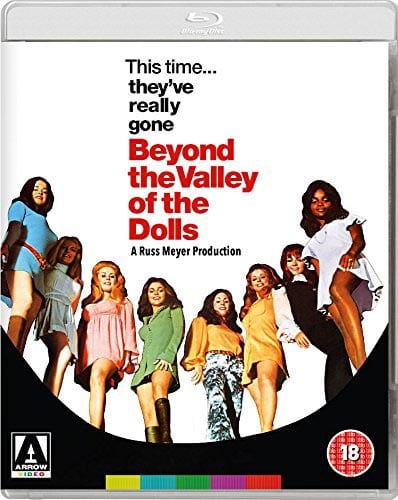
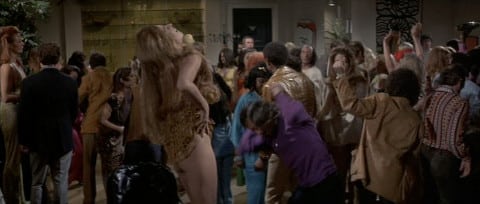
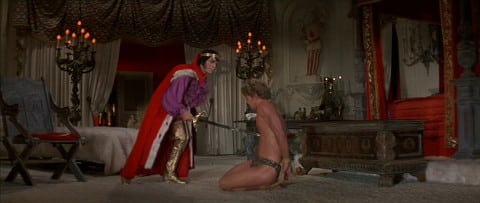



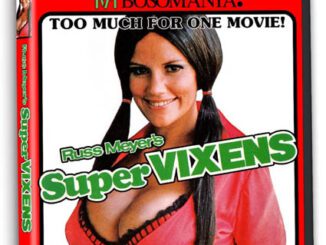

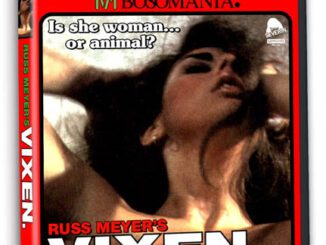
Be the first to comment